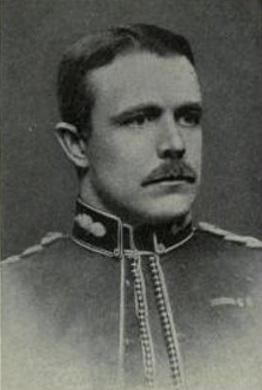Sir Fenton Aylmer, 13th Baronet facts for kids
Quick facts for kids
Sir Fenton John Aylmer
Bt VC
|
|
|---|---|

Lieutenant General Sir Fenton John Aylmer, 13th Baronet of Donadea VC KCB
|
|
| Born | 5 April 1862 Hastings, Sussex |
| Died | 3 September 1935 (aged 73) Lingfield Road, Wimbledon, Surrey |
| Buried | |
| Allegiance | |
| Service/ |
|
| Years of service | 1880–1919 |
| Rank | |
| Unit | Corps of Royal Engineers |
| Commands held |
|
| Battles/wars |
|
| Awards | Victoria Cross Knight Commander of the Order of the Bath |
| Spouse(s) | Elsie Julie Oppermann, Lady Risley |
Sir Fenton John Aylmer (born April 5, 1862 – died September 3, 1935) was a brave Anglo-Irish soldier. He received the Victoria Cross, the highest award for bravery in the British military. He was a Lieutenant-General and the 13th Baronet of Donadea.
Aylmer joined the Indian Army and quickly faced tough battles. He was involved in fighting on the north-west frontier. In a very brave act, he helped save soldiers during the Chitral Expedition. For his courage, he earned the Victoria Cross. This award helped him move up quickly in the army ranks.
Early Military Life
Fenton John Aylmer was born to Captain Fenton John Aylmer and Isabella Eleanor Darling. He went to the Royal Military Academy, Woolwich. This is a special school for training army officers.
He became a Lieutenant on July 27, 1880. Later, he took part in the Burma expedition. This happened between 1886 and 1887.
Winning the Victoria Cross
Fenton Aylmer was 29 years old when he won the Victoria Cross. He was a captain in the Corps of Royal Engineers. He was also part of the Bengal Sappers & Miners in the British Indian Army.
He earned this award during the Hunza–Nagar Campaign in India in 1891. Here is what he did:
On December 2, 1891, Captain Aylmer was attacking Nilt Fort in British India. He used explosives to open the inner gate. Even though he was badly hurt, he fired his revolver 19 times. He killed several enemies. He kept fighting until he fainted from losing too much blood. Then, he was carried away from the battle.
After this, he was promoted to Major in 1893. This was because of his brave actions in the Hunza-Nagar Expedition. He also joined the Chitral Expedition in 1895.
He continued to serve with the Royal Engineers. He was promoted to brevet Lieutenant-colonel. In 1901, he became an Assistant Quartermaster general in India. He was also promoted to the full rank of colonel.
In 1912, he became a major-general. He then took on the role of Adjutant-General for India. In 1913, he married Lady Risley. She was the widow of Sir Herbert Hope Risley.
World War I Service
Fenton Aylmer became a lieutenant general on June 11, 1915. He was sent to Mesopotamia (modern-day Iraq). There, he took command of the 7th (Meerut) Division.
Soon after, he was put in charge of the Tigris Corps. This group of soldiers was formed to try and end the siege of Kut. The Tigris Corps had over 20,000 men. They included the Meerut Division and the 12th Indian Division.
They left Basra in late 1915. They arrived at Sheikh Sa'ad in January 1916. General Aylmer's troops attacked the Ottoman positions. This was known as the Battle of Sheikh Sa'ad. After two days, the Ottoman army pulled back. However, the British had many casualties, about 4,000 soldiers were hurt or killed.
The Ottoman troops moved back a few miles. They set up new defenses. The British attacked again in the Battle of Wadi. They were partly successful but lost about 1,600 more soldiers.
A third division, the 3rd (Lahore) Division, joined Aylmer's Tigris Corps. This new division, along with the weakened 7th Division, attacked Ottoman defenses at Hanna. This attack, called the Battle of Hanna, failed completely. About 2,700 British soldiers were killed or wounded.
General Aylmer received another division, the 13th (Western) Division. The next month was spent resting the troops. They also checked the Ottoman defenses. Time was running out for Major-General Townshend's soldiers in Kut.
Aylmer launched a two-part attack on March 7, 1916. The attacks were at the Sinn Abtar Redoubt and the Dujaila Redoubt. Both attacks failed. This was because the attacks were not well-coordinated. The British lost about 4,000 more soldiers.
Fenton Aylmer was then replaced by Major-General Gorringe. Aylmer did not lead troops in battle again. He served as a division commander in India until 1917. He retired from the British Army in 1919. From 1922 until his death, he was a Colonel Commandant of the Royal Engineers.
He passed away in 1935. His body was cremated at the Golders Green Crematorium. His ashes are still there. His Victoria Cross is on display at the Royal Engineers Museum in Chatham, Kent, England.
Images for kids




